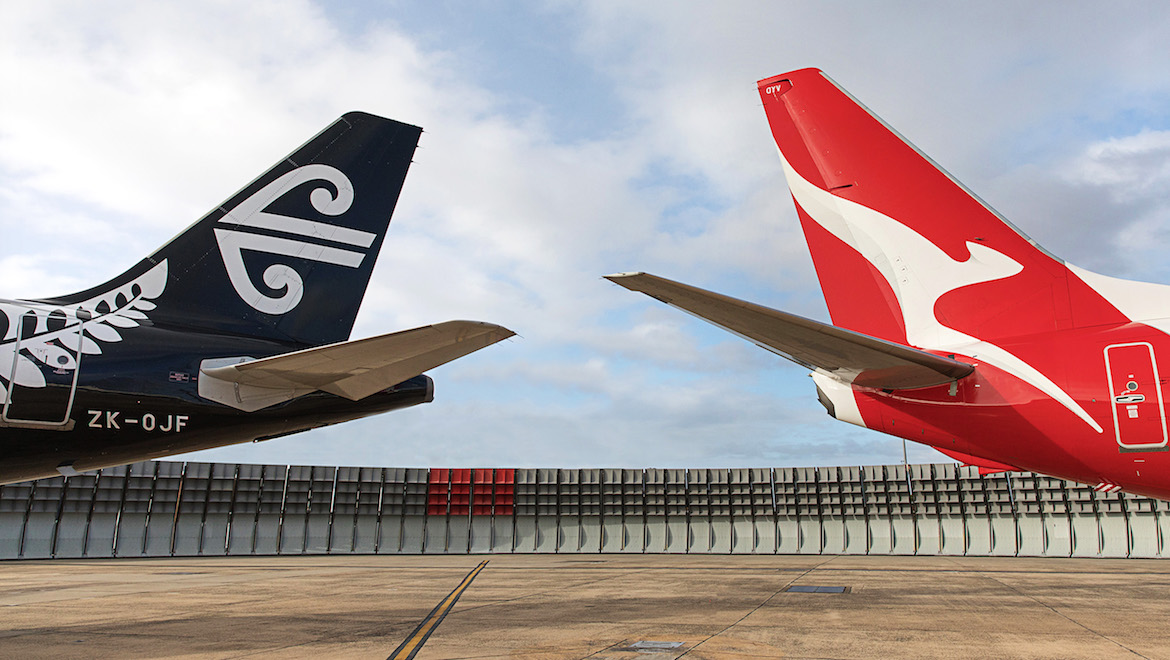
The governments of Australia and New Zealand have agreed upon a two-way travel bubble between the two countries across the Tasman Sea, in light of both countries achieving near-total elimination of COVID-19.
While both countries still record some cases of COVID-19 in overseas citizens and permanent residents returning home from elsewhere in the world, Australia and New Zealand have introduced robust hotel quarantine programs for such overseas arrivals.
The programs have been overwhelmingly effective, and both countries now boast little to no COVID cases via community transmission.
In light of this, New Zealand’s Prime Minister Jacinda Ardern stated that the newly secured two-way, trans-Tasman bubble will launch on 18 April at 11:59pm.
PM Ardern said the decision to launch quarantine-free travel was made because the risk of transmission was low, with Australia containing the last of its recent COVID-19 outbreaks.
The announcement paves the way for the first significant international travel for Australians since the start of the pandemic. It also comes after PM Ardern said two weeks ago the country was committed to the arrangement but would “proceed with caution”.
“Our health response now gives us an opportunity to commit with loved ones again as we start a new chapter in our recovery,” she said.
However, the new arrangement will allow New Zealand to pause or suspend the bubble if any outbreaks occur in Australia.
“While we absolutely wish to encourage family and friends to reunite and visitors to come and enjoy the hospitality New Zealand is ready and waiting to offer, those undertaking travel on either side of the ditch will do so under the guidance of flyer beware,” said PM Ardern. “People will need to plan for the possibility of travel being disrupted if there is an outbreak.
“For instance, if a case is found that is quite clearly linked to a border worker in a quarantine facility and is well contained, you’ll likely see travel continue in the same way as you could see life continue if that happened here in Australia.
“If, however, a case was found that was not clearly linked to the border, and a state responded by a short lockdown to identify more information, we’d likely pause flights from that state in the same way we would stop travel into and out of a region in New Zealand as if it was going into a full lockdown.
“And if we saw multiple cases of unknown origin, we would likely suspend flights for a set period of time.”
Last month, Australia paved the way for the trans-Tasman bubble by amending its Biosecurity Act, which gives it the legal right to ask all returning residents to quarantine for 14 days.
“Australia is ready for any potential travel bubble with New Zealand,” said Health Minister Greg Hunt. “We’re prepared. We understand New Zealand has to go through its processes, and we’re deeply respectful of those, but we are ready when they are.”
One of the first major beneficiaries of the bubble will be Hobart, with Air New Zealand revealing last month it would operate flights from Auckland for the first time in a generation.
It came after Australian Prime Minister Scott Morrison announced a deal in November to re-establish a travel link between Tasmania and New Zealand for the first time since 1996.
The agreement, which was intended to start in January, will include 130 direct flights from Hobart each year, with three departing per week in warmer months, and two in winter.
Before coronavirus hit, documents released to Hobart MPs pre-COVID predicted restarting the route could generate more than $100 million in tourism.
The move was made possible after because Hobart Airport has upgraded to its biosecurity and customs procedures to accept international flights.
A one-way ‘travel bubble’ first opened in October 2020 allowing Kiwis to enter Australia without quarantine, but not the other way around.
Both countries indicated it would be made reciprocal in the first quarter of 2021, however, the move was postponed due to numerous small outbreaks of COVID in both countries.
PM Ardern’s announcement will likely come as a surprise to many industry figures, who had written off the move until later this year.
In February, for instance, Auckland Airport predicted trans-Tasman travel wouldn’t restart in the first half of 2021 when it unveiled its six-month financial results.
“Although the government remains committed to restarting two-way trans-Tasman travel, and we support this, for the purposes of this underlying earnings guidance we have assumed there will be no material quarantine-free, two-way Tasman travel during the remainder of the 2021 financial year,” said Auckland Airport’s chief executive Adrian Littlewood. “It also assumes no further lockdowns of an extended duration during the period.”
Additional reporting by Hannah Dowling.










